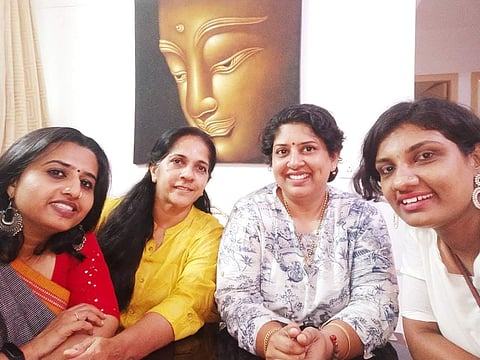

Throughout our conversation, Seema Lal emphasised how a ‘one size fits all’ approach doesn’t work for educating and enabling autistic students. A Kochi-based psychologist and special educator with more than two decades of experience, Seema is also the co-founder of an advocacy group called Together We Can, along with the parents of three autistic children. Five years ago, the group had filed a petition with the Child Rights Commission, seeking changes in forms of therapy in the state, for which they received a judgment in their favour just a few days ago. Ecstatic, she says, “Upon implementing this, the nature of therapy will be revolutionised. It will be transparent, will include parents and every therapy centre will now be mandated to register.” We caught up with Seema, who is also working on her PhD thesis on ‘empowering parents of autistic children’ for a quick chat. Excerpts from the conversation:
1. What are the main activities of Together With Can?
Through Together We Can, we empower families to reduce undue dependence on professionals, therapy and special schools and to empower themselves. From the beginning itself, we’re teaching children the routine and flexibility. We must help the child function independently in their own house first. Our aim is to find a support system and figure out factors that make the journey difficult. Every child has its own set of struggles. We are not trying to fix anything but only understand what works best for them. The system badly needs a makeover to get the best out of each child.
2. What sort of changes would you recommend in the current rehabilitation system?
The rehab system needs a lot of work. We need a strength-based approach. We must concentrate on what is possible for the child. Different children have to be approached differently. Parents and educators must work together as a team to figure out what works the best and, on the way, to take it forward at home. Only then can we think of mainstreaming and inclusion.
3. Technology has improved massively in the past couple of decades. How dependent are you on it to educate children and parents?
I do not suggest tech dependence. Obviously, it is not a blanket statement for all children. If a child is able to connect to people and learn socially, there is no need for them to be dependent on apps and gadgets. If we include tech in everything, how do we get them to connect with people? It has to be used wisely. These days, we see a lot of Skype live video streaming, where teachers are communicating with students virtually. However, not many have access to it and the parent has to be with the student. However, the parent can be equipped to do it herself. However, if there are children who are non-verbal, technology helps them a lot. These days, many apps convert words to voice. This is a boon.
